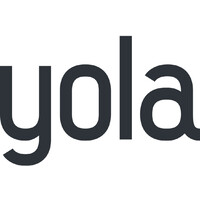Belonging from Day One
Diversity. Equity. Inclusion…Belonging? Most companies in recent years are acutely aware of the importance of not only bringing in but also fostering diversity in their workplace. You may have even noticed that the acronym has changed over time moving from talking simply about Diversity to Diversity and Inclusion.
We all got familiar with what the term ‘D&I’ meant just in time for the subtle shift to include Equity and turn the ampersand into an E (DEI). The latest letter to join the party is arguably the most important and hardest to unlock… B for Belonging (DEIB).
You may be thinking to yourself, I thought I was reading an article about onboarding and action plans for setting new team members up for success from day one. You didn’t click the wrong link because fostering a sense of belonging is the number one most important thing you can do in an employee's first 90 days in their new role. It will be the strongest predictor for whether or not your new hires stay at your company long-term, how engaged they are, and how strong their performance is.
The Biology of Employee Onboarding
It seems like such a small thing but the small things are often the biggest things. In a new hire’s first few moments at a company, they are the most aware of the signals sent by small details and gestures.
Let’s talk biology for a moment. If you’ve read Daniel Kahneman’s book Thinking Fast and Slow you know that our brains have two key ways of thinking.
If not, here is a quick book summary:
One way of thinking uses our amygdala, the area of the brain responsible for strong emotions and survival instincts. The second is the hippocampus, our slower, more logical brain that we can only tap into when we don’t feel threatened by our environment.
It’s our logical brain where we do our best work and perform at our best in the workplace. So what does this have to do with new hire onboarding? Let me explain.
Belonging is the sense that we are respected and valued and our voice can be heard. When we start at a new company it can feel like moving to a new country with its own culture, set of norms, language, and unspoken rules. On day one we begin the journey to map out how everything works in this new world and where our place is in it.
In a new environment (such as the first day at a new organization), our brains are on high alert. A new hire is likely asking themselves questions like, “How similar or different am I to people who work here?” “Where do I find what I need to be successful?” “How do I communicate?” and “Will people like me?”
The goal is realignment with the logical brain that is not on alert, but able to focus on non-survival tasks - work. To do so we need to cultivate safety.
When you feel like you belong you feel safe and when you feel secure in your environment, you are able to tap into that second more logical way of thinking and perform at your best. You’re using less cognitive resources to navigate the workplace and more of those resources to simply do your job and do it well.
Creating Safety and Belonging for New Hires
We all know how important first impressions are. It’s important to send the right signals to your new hires so that they can belong and can be successful from moment one. We want these things so that they are free to do their best work for our businesses.
So, what do new hires need to be successful and feel like they belong in the first 90 days of a new job? I’m going to group it into three categories:
- The necessities
- The knowledge
- The welcome
The Necessities
Think of this category as the basic needs to fulfill their job requirements at your company. Much like air, water, food, and shelter are basic needs for humans to live.
They need an onboarding process that sets them up with computer equipment and systems access, they need to get paid, they need to know who their manager is, and what their job entails.
I’m also going to group in communication about what to expect and when to expect it. The more clearly and regularly you can share what they need to do and when, the better.
The Knowledge
This is the bucket I have reserved for training and employee orientation. They need to meet people, know which meetings to attend and when, what systems to use and how to use them for sustaining success, industry-specific knowledge, and company-specific knowledge.
They also need to know what success looks like at your company so this means setting clear expectations. The best practice here is an outlined onboarding plan for the first 2 weeks as well as 30, 60, and 90-day goals. You can use these as the markers for scheduled check-ins and a personal development plan. An employee onboarding software can help you keep this process structured and on track.
Make it easy for the new hire to also be self-sufficient and negotiate success. Create training programs, templates, and resources that build confidence and the ability to be successful independently. For example, provide a first-day document that outlines all of the company resources. Bonus points for including direct links or having IT bookmark key sites before they receive their computer.
The Welcome
This is where that all-important Belonging piece comes into the picture. What are both literal and figurative welcome messages to new employees you can send from the moment an offer is signed that lets your new hire know that they belong at your organization?
Be thoughtful, be kind, be helpful, and style points matter.
So how do you make sure your new hires have all three of these things? Let’s break it down into a process.
Offer Letter Signed
The days immediately after a new employee signs your offer will include the bulk of the work to ensure a smooth transition into your organization. The more you can get done during this timeframe, the more successful their onboarding will be.
Welcome Messages from Interviewers
Your new hire just said yes! This is a BIG moment for you and them. Start sending the signals of belonging right away.
Encourage each member of the interview team to send a short message of welcome. I recommend making it part of a recruiter or hiring manager’s process to send an email to the interview team with the new hire’s personal email. This is to let the interview team know that the person has accepted the offer, when they will be starting, and a prompt to welcome them to the team.
A What-to-Expect Email
Have a few templated emails ready to go.
The first should come from the primary contact for the new hire. This could be a recruiting coordinator, office manager, or the manager themselves.
Outline what the new hire should expect before and on day one, as well as any actions you need them to take (providing a home address, enrolling in benefits, completing tax or other onboarding paperwork, etc.)
This email should match strategy to situation. Information on what to expect will differ greatly depending on whether your new hire will be stationed in the office or working remotely.
If it’s an in-office start include timing, address, any building access information, dress code, whether lunch will be provided, etc.
If you are onboarding a remote employee and their equipment is getting shipped to their home, make sure you provide them with an IT contact in case they have issues with their setup. Also communicate what you expect them to have set up prior to day one (for example, that their video call software works, that they logged into their email, and that they’ve populated relevant employee profiles with their personal information)
Make sure they know the first thing on their to-do list. It can be a first-time meeting with their manager that is already scheduled in their calendar. If they have any direct reports, you can also schedule time to sit down with them so that the team can meet the new leader
Equipment and Systems Access
Collaborate with your security and IT department to ensure the new hire has access to everything they need to do their job before they start. If they require safety equipment, a uniform, or any other policy requirements to do their job, this should also be ready ahead of time.
Onboarding and Training Plan
Put together a clear map for taking the new hire from their initial welcome to a fully operational and engaged member of the team. You’ll need to do this in partnership between the HR team and the new employee’s manager.
HR would dictate broader company-wide training requirements and the manager is responsible for team and role-specific training.
Bake Fun into the Process
Save space for something fun in whatever way is reflective of your organizational culture. This can be sending company swag to the person’s house, a balloon on their chair on day one, matching them with an onboarding buddy from another team, etc.
Once again, this is a celebration, and taking the time to make your new hire feel special goes a long way.

Day One
The employee’s to-do list on day one should look something like this:
- A meeting with their new manager.
- Introducing the new hire to key stakeholders and members of the company, or at least their department.
- Signing up for benefits, perks, and anything else you need to capture to complete their profile in your HRIS.
- A lovely team lunch.
- A run-through of expectations and norms. This can include headlines of your HR policies. Give them a complete copy of your employee handbook to refer back to as needed.
- Desk time. Have a cheat sheet with resources, things to bookmark, resources to read on your intranet, systems to set up, Slack channels to join, etc.
- Leave time for breaks.
Week One
I recommend a mixture of pre-scheduled training, recommended meetings, activities, optional training, and some downtime. Start heavier with the pre-scheduled activities and slowly taper off throughout the first two weeks.
Start with broader training and then slowly get more specific. For example, start with high-level company information — things like company history, the organizational chart, an overview of products or services, an industry overview, etc. Transition to department, team, and role-specific training.
If you are onboarding several people at once you can group these together. This means you will create a fun cohort and alleviate the burden on trainers who usually do this in addition to their full-time roles.
Week Two
By week two you should focus primarily on role-specific training and have the new hire focus on learning and meeting folks throughout the organization.
Week two is a great time to start having the new hire set up 1:1 meetings with key individuals throughout the company. These can be people they will either work with regularly or who would be helpful to know when gathering information.
I recommend providing a list of names and titles with a short blurb about why this person is important to know. You can include some helpful things that should be covered during the 1:1 meeting.
The First 30 Days
The first 30 days are all about learning. Expectations should be clearly stated as such.
It relieves a lot of pressure for new hires to know that they are doing their job simply by absorbing as much as possible. We don’t expect them to be fully ramped up in such a short time. Most new hires are a little insecure. They want assurance that you feel you made a good hire, so (unless you tell them otherwise) they will feel pressure to already be contributing.
I recommend scheduling a 30-day check-in between the manager and the new hire and having the new hire complete a quick evaluation ahead of time. Keep it short and tailored to where they are in their onboarding journey.
Ask questions like:
- What’s going well?
- What could be going better?
- What could be clearer?
- Do you need any additional support or training?
Use the meeting to review their answers, make a plan to fill any gaps where they are feeling unsure (scheduling follow-up training), and clarify your goals for the next 30 days. At this point, you can begin to take some training wheels off.
Perhaps now, instead of having the new hire shadow tenured employees, you have them take charge while they are shadowed by a peer.
This way they still have support but they can also start to operate more independently.
The 60-Day Mark
The 60-day check-in can be very similar to the 30-day check-in. Use it as a chance to make sure new hires are clear on what they are doing well and reiterate where they are meeting your expectations.
Highlight any gaps in expectations and what specific actions they can take to close those gaps, and then lay out your expectations for where you want them to be by the 90-day mark.
90 Days and Beyond
Set goals for your employees. You can use KPIs (key performance indicators) and OKRs (objectives and key results) to define what success will look like going forward.
Decide when these will be checked in on and whether they roll into your regular performance review cycle. If so, what will you look at during the next performance review, and how can the employee ensure they are delivering these things?
Follow best practices for performance management to maintain clarity around expectations. If your new hire is doing well and hitting their success goals (KPIS and OKRs), they should know this going into a review. If they are not performing as expected, it should not be a surprise they discover during your performance review.

Measuring the Success of Your Onboarding Program
Every new hire will have a slightly different experience, but you still want to make sure that, on average, your onboarding program is meeting your three goals. To recap, they are making sure every new hire has what they need to be successful, is given the training, knowledge, and support to do their job well, and feels that critical sense of belonging.
The first way you determine the success of your onboarding program should always be through regular in-person check-ins.
Encourage and remind the hiring manager to ask for feedback throughout the onboarding journey and during 1:1’s. This doesn’t need to be long or formal, a few simple questions that make sure everything is clear go a long way.
It can also be helpful to gather more quantitative data to track trends over time. You can assess consistency across managers and departments and identify the most impactful changes you can make by sending a brief survey to new hires at the 90-day mark. Use this survey to gather feedback on your recruiting process while it’s fresh in their mind.
I recommend asking questions such as:
- How was your candidate experience?
- Did you have everything you needed to feel ready to start on day one?
- Do you feel you understand your benefits and perks?
- How was your company training?
- How was your role-specific training?
- How was the pacing of your training?
- Did you have a 30-day and 60-day review with your manager?
- Did you have a clear idea of what your goals and expectations were in your first 90 days?
- Do you have a clear understanding of what success looks like moving forward?
- What is still unclear?
- Overall, how would you rate your first 90 days?
Some Last Thoughts on an Employee’s First 90 Days
The first 90 days at a new job are hands down the most important period of time in an employee's journey at your company.
These days are not only an investment (in the new hire AND your company) but they set the tone for the remainder of their tenure. The way they are welcomed and integrated into the team will impact whether or not the employee feels they belong at your organization.
If you invest energy and resources into making this time valuable, you will increase engagement and performance and reduce attrition. Your new hires will ramp up quickly and will recommend you to their friends, increasing your recruiting candidate pipeline.
This is also a great time to have fun. A new person brings new energy and ideas, so make their arrival a time of celebration.


























